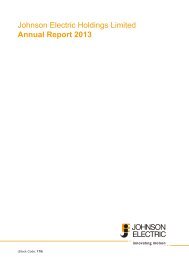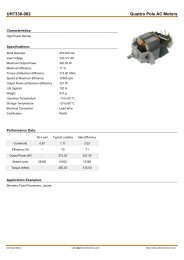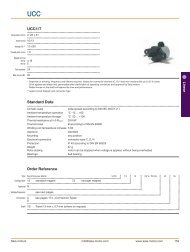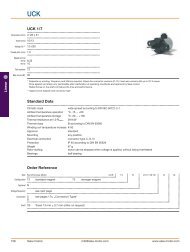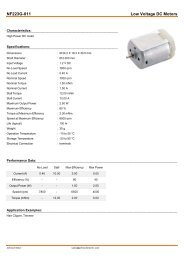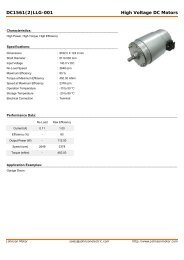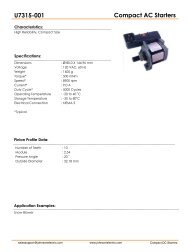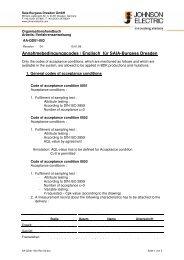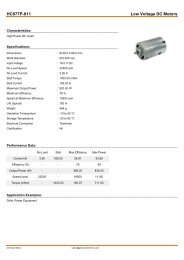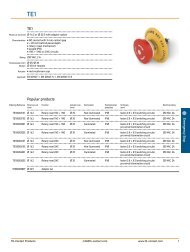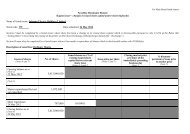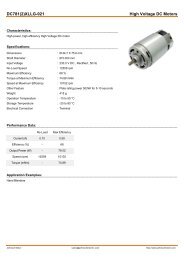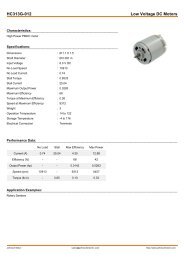You also want an ePaper? Increase the reach of your titles
YUMPU automatically turns print PDFs into web optimized ePapers that Google loves.
NOTES TO THE ACCOUNTS<br />
2. Principal accounting policies (Cont’d)<br />
2.16 BORROWINGS<br />
Borrowings are recognised at fair value, net of transaction costs incurred. Transaction costs are incremental<br />
costs that are directly attributable to the acquisition, issue or disposal of a financial asset or financial liability,<br />
including fees and commissions paid to agents, advisers, brokers and dealers, levies by regulatory agencies<br />
and securities exchanges, and transfer taxes and duties.<br />
Borrowings are classified as current liabilities unless the Group has an unconditional right to defer settlement<br />
of the liability for at least twelve months after the balance sheet date.<br />
2.17 DEFERRED INCOME TAX<br />
Deferred income tax is provided in full, using the liability method, on temporary differences arising between<br />
the tax bases of assets and liabilities and their carrying amounts in the financial statements. Taxation rates<br />
enacted or substantively enacted at the balance sheet date are used to determine deferred income tax.<br />
Deferred income tax assets are recognised to the extent that it is probable that future taxable profit will be<br />
available against which the temporary differences can be utilised.<br />
Deferred income tax is provided on temporary differences arising on investments in subsidiaries, associates<br />
and jointly controlled entities, except where the timing of the reversal of the temporary difference can be<br />
controlled and it is probable that the temporary difference will not reverse in the foreseeable future.<br />
2.18 EMPLOYEE BENEFITS<br />
(a) Pension obligations<br />
Group companies operate various pension schemes. The schemes are generally funded through payments<br />
to insurance companies or trustee-administered funds, determined by periodic actuarial calculations. The<br />
Group has both defined benefit and defined contribution plans. A defined contribution plan is a pension<br />
plan under which the Group pays fixed contributions into a separate entity. The Group has no legal or<br />
constructive obligations to pay further contributions if the fund does not hold sufficient assets to pay all<br />
employees the benefits relating to employee service in the current and prior periods. A defined benefit<br />
plan is a pension plan that is not a defined contribution plan. Typically, defined benefit plans define an<br />
amount of pension benefit that an employee will receive on retirement, usually dependent on one or more<br />
factors such as age, years of service and compensation.<br />
The liability recognised in the balance sheet in respect of defined benefit pension plans is the present<br />
value of the defined benefit obligation at the balance sheet date less the fair value of plan assets. The<br />
defined benefit obligation is calculated annually by independent actuaries using the projected unit credit<br />
method. The present value of the defined benefit obligation is determined by discounting the estimated<br />
future cash outflows using interest rates of high-quality corporate bonds that are denominated in the<br />
currency in which the benefits will be paid and that have terms to maturity approximating to the terms of<br />
the related pension liability.<br />
All actuarial gains and losses are recognised in full in the period in which they occur, outside profit and<br />
loss account, in reserve.<br />
66 <strong>Johnson</strong> <strong>Electric</strong> Holdings Limited



